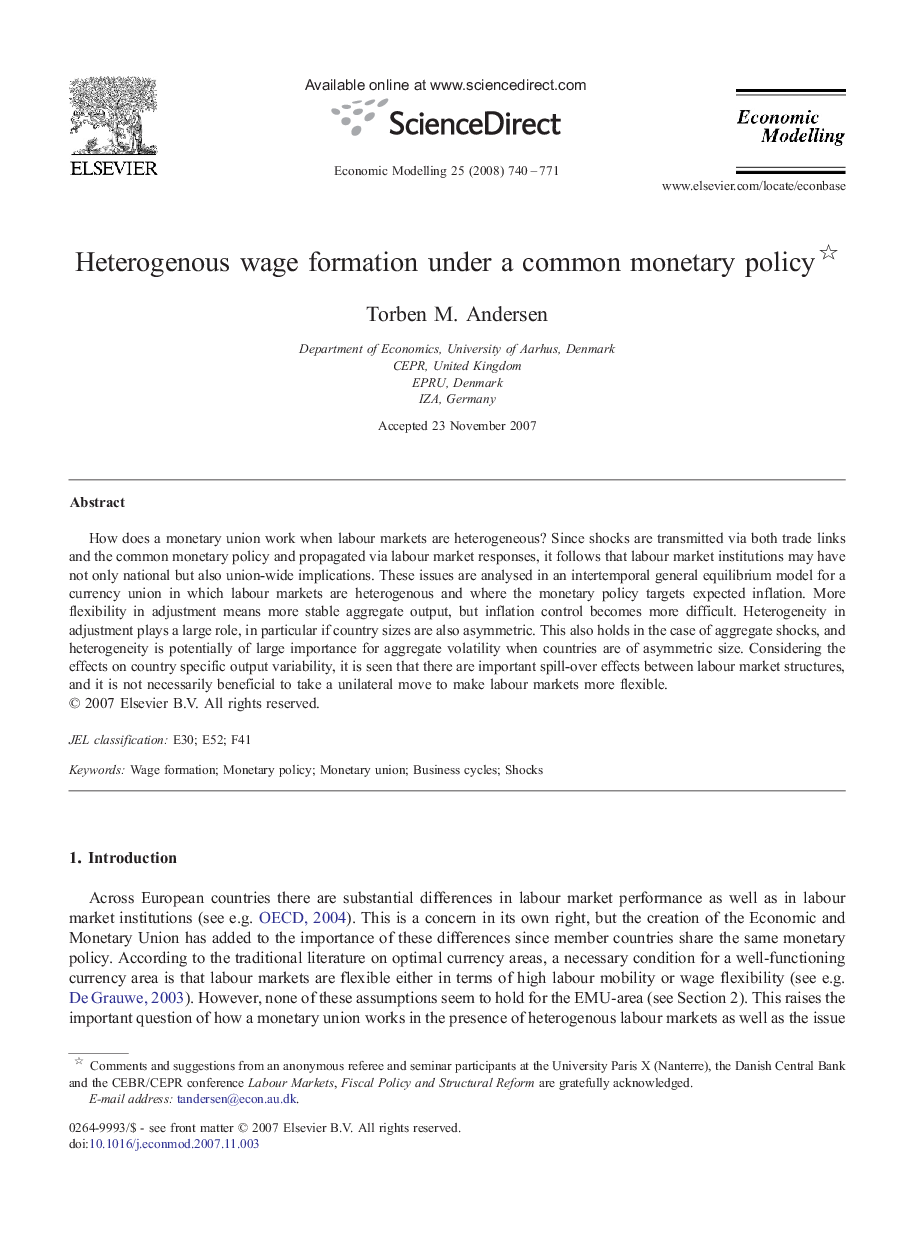| Article ID | Journal | Published Year | Pages | File Type |
|---|---|---|---|---|
| 5055932 | Economic Modelling | 2008 | 32 Pages |
Abstract
How does a monetary union work when labour markets are heterogeneous? Since shocks are transmitted via both trade links and the common monetary policy and propagated via labour market responses, it follows that labour market institutions may have not only national but also union-wide implications. These issues are analysed in an intertemporal general equilibrium model for a currency union in which labour markets are heterogenous and where the monetary policy targets expected inflation. More flexibility in adjustment means more stable aggregate output, but inflation control becomes more difficult. Heterogeneity in adjustment plays a large role, in particular if country sizes are also asymmetric. This also holds in the case of aggregate shocks, and heterogeneity is potentially of large importance for aggregate volatility when countries are of asymmetric size. Considering the effects on country specific output variability, it is seen that there are important spill-over effects between labour market structures, and it is not necessarily beneficial to take a unilateral move to make labour markets more flexible.
Related Topics
Social Sciences and Humanities
Economics, Econometrics and Finance
Economics and Econometrics
Authors
Torben M. Andersen,
